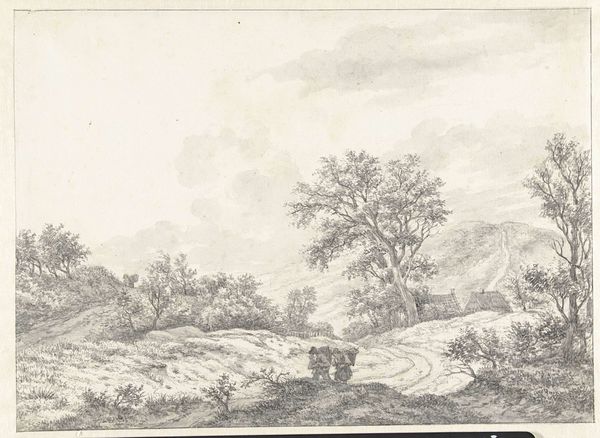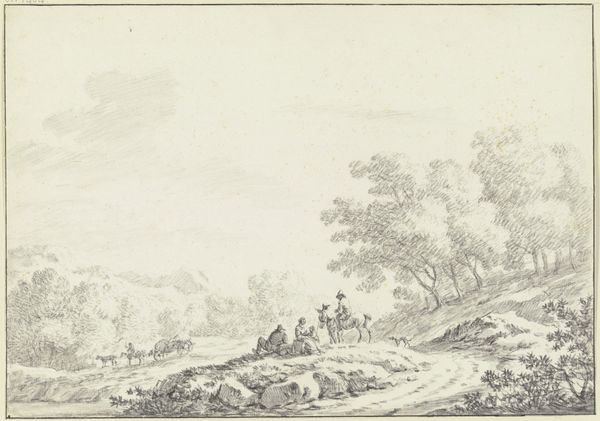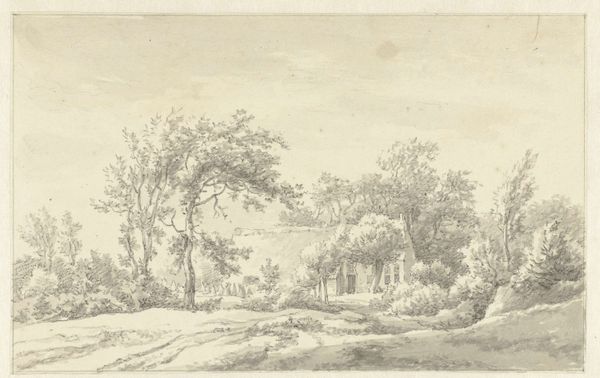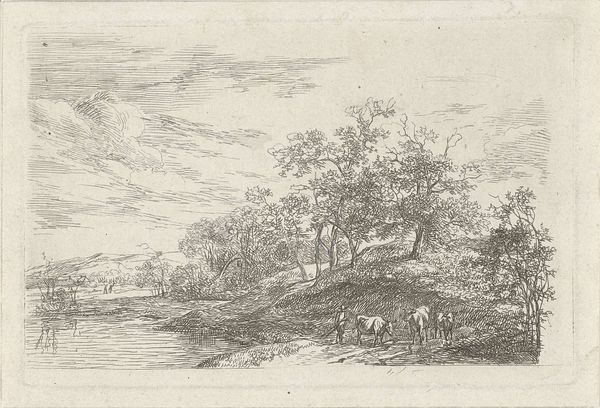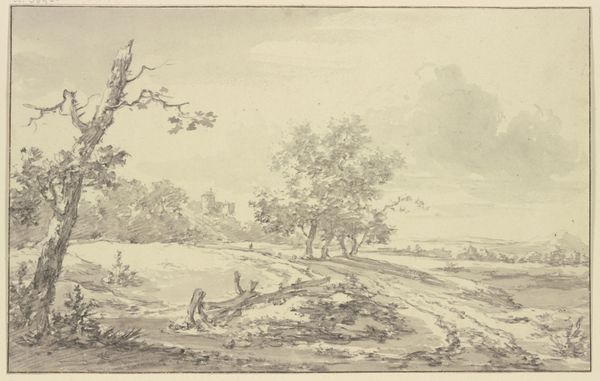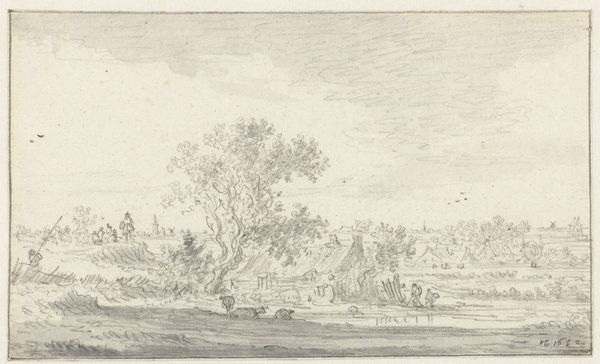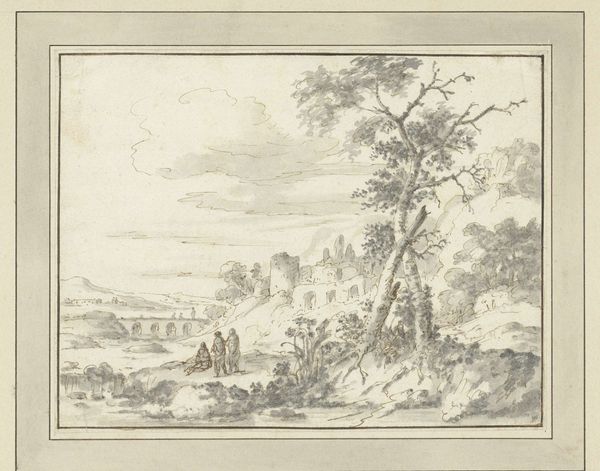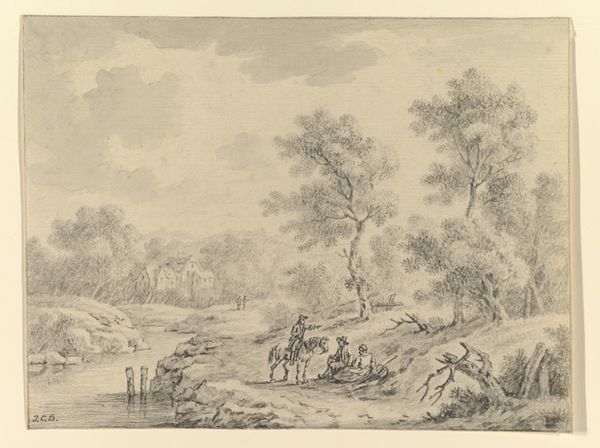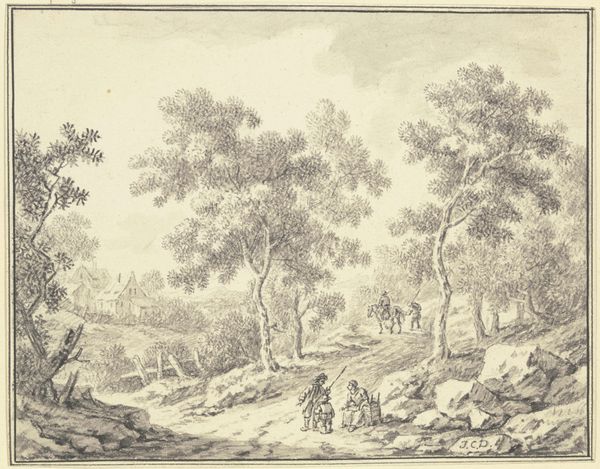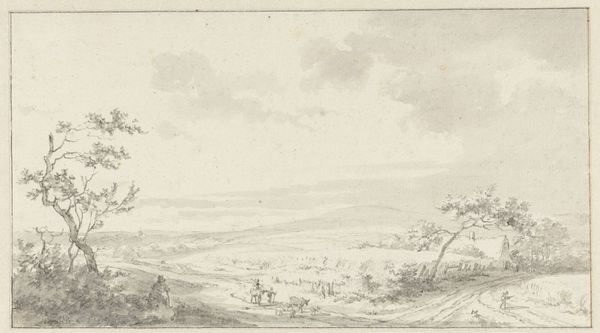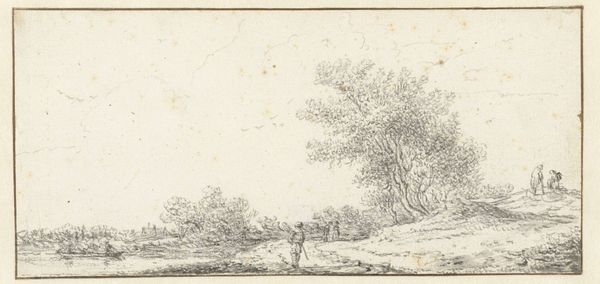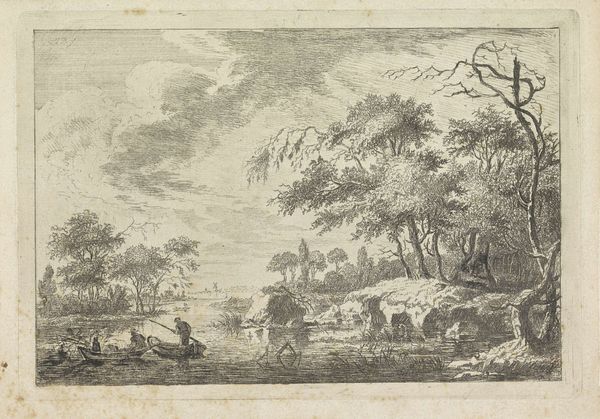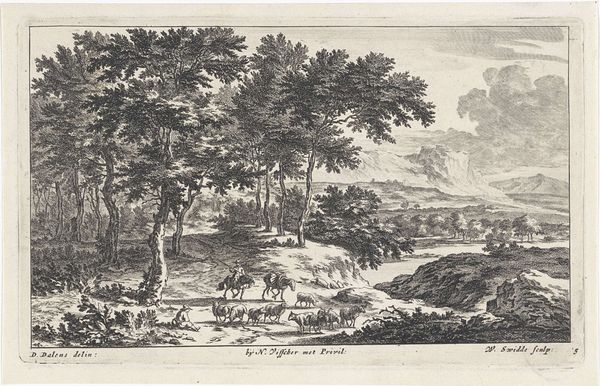
drawing, pencil
#
drawing
#
dutch-golden-age
#
pen sketch
#
pencil sketch
#
landscape
#
pencil
#
realism
Dimensions: height 196 mm, width 313 mm
Copyright: Rijks Museum: Open Domain
Editor: So, this is "Duinlandschap achter de bleekerij van De Mol," a pencil drawing by Jan Vincentsz. van der Vinne, likely from 1677. It's a landscape...sort of a peaceful, hazy scene. What strikes you most about it? Curator: I see a quiet, understated commentary on labor and the land. This "bleekerij," or bleaching field, hints at the linen industry. Van der Vinne’s choice to depict the landscape *behind* it makes me wonder, doesn't it? Is he perhaps critiquing the exploitation inherent in textile production, even subtly? Editor: Interesting. I hadn't thought about that at all. It just seemed like a simple landscape. Curator: Well, let’s dig deeper. Notice the lone figures, seemingly resting. Are they romanticized peasants or laborers caught in the demands of their time? Consider the Dutch Golden Age – immense wealth built, in part, on the backs of those who worked the land and in these industries. Is he inviting us to consider that inequity? Editor: So you're saying even a landscape can be a political statement? Curator: Absolutely! Especially when we consider *who* is typically represented in landscapes, and who is absent. And *whose* land is typically being depicted. This drawing is a starting point for thinking about environmental concerns, labor exploitation, and even issues of class during this historical period. Editor: I guess I always assumed landscapes were just pretty pictures. Curator: Many are meant to convey ideals of power and ownership. But art provides avenues for more. Editor: That's a totally different way of seeing it. I'll definitely be looking at landscapes with a more critical eye now. Curator: Excellent! Thinking about art in the context of power dynamics opens a lot of possibilities.
Comments
No comments
Be the first to comment and join the conversation on the ultimate creative platform.
